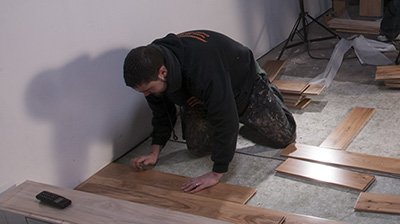We use cookies to make your experience better. To comply with the EU GDPR e-Privacy directive, we need to ask for your consent to set cookies. Learn more.
How to Repair Surface Scratches on a Lacquered Floor

Surface scratches on a lacquered floor are extremely hard to repair and require a high level of skill and experience to achieve a good finish; we suggest using a professional floor fitter for this type of job.
With a lacquered floor you cannot just apply a new coat of lacquer on top of an existing one, there is a chance that they will react and become patchy, sticky, dull in appearance or just peel away from the surface once dry.
Certain lacquers are easier to work with than others when being applied to an existing one, try to avoid the use of solvent based lacquers as these do not bond well with existing ones. Try to use a water based product as they are less likely to react badly and adhere better to existing lacquers. It’s nearly impossible to tell if your lacquered wood floor is a solvent or water based product so there’s always a little guess work involved.
Unlike an oiled floor, when repairing a scratch the whole board has to be repaired not just the affected area.
- 1. Vacuum the flooring first to make sure that any loose grit is removed, clean the floor with a good quality lacquer floor cleaner, then leave to dry.
- 2. Next use a low tack masking tape and place around the damaged board, make sure you cover enough of the surrounding floor so no further damage can be caused.
- 3. Always follow manufacturers preparation instructions to ensure that the lacquer is ready to be applied.
- 4. For smooth lacquered floors, gently apply a fine coat of lacquer to the surface of the wood using a medium pile cotton roller along the grain of the flooring. Leave for between 4 to 6 hours to dry before applying a second coat.
- 5. For brushed and lacquered floors, first buff the floor with a soft wire brush along the grain, then vacuum the flooring again to remove all loose grit, then apply the lacquer with a good quality wood brush again along the grain, then allow to dry. Apply a second coat in between 4 to 6 hours.
- TIP - We strongly recommend that you do a trial run first on a spare piece of flooring to ensure you feel confident enough to carry out the work on the floor.

